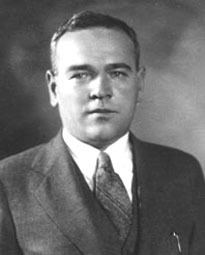Nationality Soviet Union, Russia Employer Petlyakov | Role Aeronautical engineer Name Vladimir Petlyakov | |
 | ||
Engineering discipline Aerospace Engineering | ||
Vladimir Mikhailovich Petlyakov (Russian: Влади́мир Миха́йлович Петляко́в) (15 June 1891 – 12 January 1942) was a Soviet aeronautical engineer.
Petlyakov was born in Sambek (Don Host Oblast, Russian Empire) in 1891 (currently part of Neklinovsky District, Rostov Oblast), where his father was a local official. After he and graduated from the Technical College in Taganrog (today the "Taganrog Petlyakov Aviation College", ru:Таганрогский авиационный колледж им. В. М. Петлякова) in 1910. he travelled to Moscow, where he was accepted into the Moscow State Technical University; however, due to financial difficulties he was unable to complete his studies. After the Russian Revolution, he continued his education and was hired to work as a technician in the aerodynamics laboratory at Moscow State Technical University under the guidance of Nikolai Zhukovsky, while resuming his studies. He gained experience as a laboratory assistant on wind tunnels and calculations for aircraft design. In 1922, he graduated from the same university.
In 1921–1936, Petlyakov worked at the Central Aerohydrodynamic Institute under the guidance of Andrei Tupolev, where he was involved in wing design and the development of gliders. In 1936, he became a chief aircraft designer at an aviation plant. Petlyakov was directly involved in organization and development of Soviet metal aircraft construction. In particular, Petlyakov (together with an engineer Nikolai Belyaev) elaborated methods of calculating durability of materials and theory on designing metal wings with multiple spars. Petlyakov assisted in designing the first Soviet heavy bombers TB-1, TB-3 (1930–1935), and a long-range high-altitude four-engine bomber, the Pe-8 (1935–1937).
However, on October 21, 1937, Petlyakov was arrested together with Tupolev and the entire directorate of the TsAGI on trumped up charges of sabotage, espionage and of aiding the Russian Fascist Party. Many of his colleagues were executed. In 1939, he was moved from a prison to an NKVD sharashka for aircraft designers near Moscow, where many ex-TsAGI people had already been sent to work. Petlyakov was tasked with designing a high-altitude fighter, which he successfully accomplished. However, operational experience in the Soviet-Finnish War showed that this was not what the Soviet Air Force needed, and Lavrentiy Beria, head of the NKVD and of the sharashka told that the fighter was to be redesigned as a dive bomber, with the promise that he and his colleagues would be released on its successful completion.
The resulting aircraft, the Pe-2, which went into serial production at the Kazan Aviation Plant, proved to be one of the most successful designs of World War II. Petlyakov was released in 1940, and was awarded the Stalin Prize in 1941. However, at Kazan, Petlyakov faced increasing difficulties, with so many of his trained technicians and machinists conscripted into the Soviet military and sent to the front lines, which adversely affected the quality of production aircraft. He protested to Soviet senior leadership, and was on his way to Moscow in January 1942 (flying in a Pe-2), when he died in an air crash near Arzamas. His grave is at the Arskoe Cemetery in Kazan.
Vladimir Petlyakov received the State Award of the USSR (1941) and was awarded two Orders of Lenin and an Order of the Red Star.
